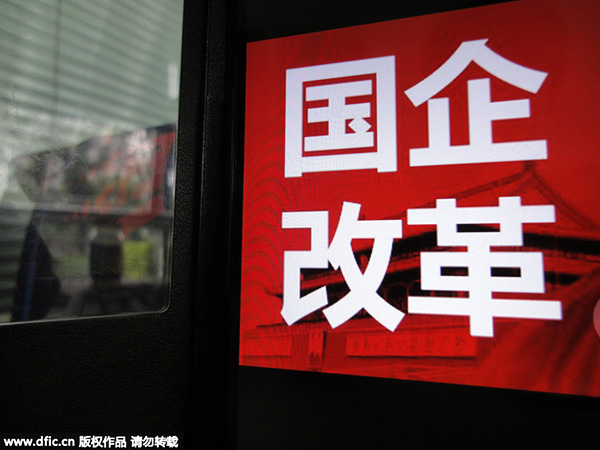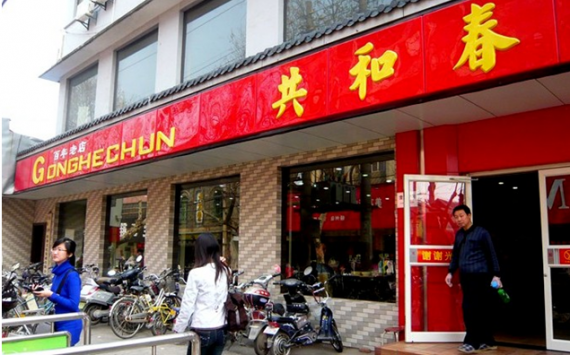China’s depressed northeast is down but not out – if officials can fix its ailing state-owned firms — South China Morning Post
–
I’m delighted to share the OpEd essay written by my China First Capital colleague Dr. Yansong Wang and published in today’s South China Morning Post. Her piece is titled “China’s depressed northeast is down but not out – if officials can fix its ailing state-owned firmsâ€. It offers up her analysis on the disappointing economic conditions and vast untapped potential in her home region, China’s Northeast, formerly known as Manchuria, and in Chinese as ä¸å›½ä¸œåŒ—. I agree with her policy prescriptions as well as prudent optimism the region can be transformed just as America’s Rust Belt.
Her final paragraph notes a paradox familiar to me as well. In Shenzhen, we’re lucky enough to know two of China’s most consistently successful listed company chairmen, Mr. Gao Yunfeng , the founding entrepreneur of Han’s Laser Group (大æ—激光集团), the world’s largest laser machine tool company, and Mr. Xing Jie, of a highly innovative and successful publicly-traded SOE, Tagen Group (天å¥é›†å›¢).
Both, like Yansong, come from Jilin Province and all three have found success far from where they were raised, in Shenzhen. Yansong puts across her final point with conviction: “We need to create the conditions where the younger versions of these two successful entrepreneurs choose to stay in the northeast and build an economic future there that we can all take pride in.â€
–
Over the course of my 35 years, China’s northeast has gone from being the country’s economic powerhouse to its most systematically troubled large region. Much of the region’s enormous state-owned industrial complex is in difficulty, while gross domestic product growth continues to lag. The deepest and most poignant signs of the economic malaise are a falling population and the fact that the northeast’s birth rate is now one-third below the national average.
The concern about how to revive the economy animates not only the highest levels of the central government, but also many people who recall the key role the region has played leading China’s modernisation. The concern is warranted. It now needs to be matched by some fresh thinking and new policy initiatives. I’d like to see the northeast become a laboratory for bold ideas about how to restructure state-owned enterprises in China.
I care deeply about what happens in the northeast. Though I now live and work in Shenzhen, I was born and raised in Jilin (å‰æž—) province. My parents and 95-year-old grandmother still live there. I owe a lot of my life’s achievements up to now – undergraduate study at the University of Science and Technology of China in Hefei (åˆè‚¥), followed by a PhD in physics from Princeton, to my current role in an international investment bank – to the mind-expanding public education I received growing up in the northeast.
The climate and its mainly landlocked geography are a challenge. But there is no reason the northeast should be a victim of its geography. The part of the US with the most similar conditions, the states of Minnesota, Michigan and Wisconsin, has successfully moved away from a focus on heavy industry to being a world leader in all kinds of advanced manufacturing and food processing. Great companies, including 3M, Cargill and Amway, all hail from this part of the US.
Could my home region produce its own world-conquering companies? I believe so.
Step one is to reorient investment capital away from the tired and often loss-making state-owned enterprises towards newer, nimbler private-sector firms. At present, too much investment goes to one of the most unproductive uses of all: new loans to companies that can’t repay their existing ones. This kind of rollover lending generally does not produce one new job or one new increment of GDP.
The central government is stepping up, announcing in August plans for 127 major projects, at a cost of 1.6 trillion yuan (HK$1.8 trillion). The problem isn’t so much that the northeast has too much heavy industry; it’s more that it has too much of the wrong kind. Basic steel is in vast oversupply. But the northeast could shine in developing speciality steel for advanced applications in China. One example that strikes me every time I ride on China’s high-speed rail network: too much of the special steel used on tracks is imported from Japan and Europe. We can make that.
How do we go from being a tired rust belt to a rejuvenated region pulsing with opportunity? The central and provincial governments should encourage more experimentation to push forward the scope and pace of state-owned enterprise reform. A starting point: banks could shoulder more of the cost of restructuring state firms. That will allow for new forms of mixed ownership, asset sales, and bigger and more effective debt-for-equity swaps.
I would also like to see the northeast become the first place where service industries, now mainly restricted to state firms – including banking and insurance – are opened up to private competitors.
There is no shortage in the northeast of the most important facilitator of economic development: a well-educated population. For now, sadly, too many of the entrepreneurially inclined leave the region. Indeed, two of the most visionary listed company chairmen I know are, like me, Jilin natives now living in Shenzhen, Gao Yunfeng of Han’s Laser and Xin Jie of Tagen Group. We need to create the conditions where the younger versions of these two successful entrepreneurs choose to stay in the northeast and build an economic future there that we can all take pride in.
Dr Yansong Wang is chief operating officer at China First Capital
–













